Apollo 50: New Perspectives
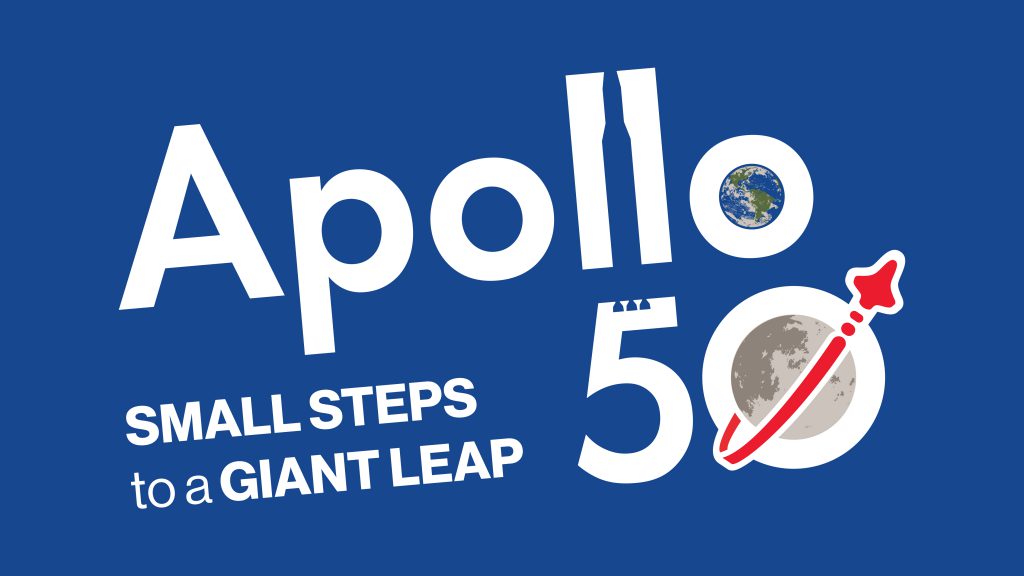
Small Steps to a Giant Leap at ScienceWorks Hands-On Museum’
By Dan Ruby, Executive Director
I was born the year that the twin Voyager spacecraft began their audacious journey to the cosmos, so I missed the world-gripping excitement of Apollo. I grew up with the Shuttle program throughout the ‘80s, ‘90s, and early-aughts, so my affection for space exploration was complex; my vivid childhood memory was not of watching Neil Armstrong leap on the Moon, nor of streaming lon Musk’s SpaceX rockets landing themselves on drone ships, but of seeing the Challenger explode, with teacher Christa McAuliffe onboard, broadcast live on a TV set in my 4th-grade classroom. I was either too early or too late.
Still, the Universe outside our thin atmosphere is inherently intriguing, and I ended up in a career as an astronomy educator and planetary researcher. Through NASA-funded projects with students and teachers, I discovered that space is an amazingly effective lens through which to view science, technology, engineering, and math. I made annual visits over a decade to the US Space & Rocket Center in Hunstville, AL, where the mighty Saturn V rockets were created as the brainchild of Werner Von Braun, and through those trips, I developed a special appreciation of Apollo as a unique focal point in the history of humanity. The manned Moon landings were not just the most ambitious geology field trip ever, though they were definitely that. They were not just the culmination of one of the largest and most complex engineering projects to date, though they were definitely that. They were not just the first time humans had seen the blue marble of planet Earth as a fragile whole, causing a transformational shift toward understanding our globe as a unified system, though they were definitely that. They were not just an example of highly-trained, exceptionally-skilled astronauts pushing the envelope of what is physically possible, though they were definitely that. They were not just a stunning instance of hundreds of thousands of individuals, working for countless companies across myriad industries, coming together as a finely-tuned team to support a common goal, though they were definitely that. They were not just the crystallization of a singular vision fueled by unprecedented resources, though they were that. Lastly, they were not just the inspiration for an entire generation to become scientists and engineers, equipped with the optimism that comes from knowing anything is possible, though they were definitely that too.
The Apollo missions from 1969 to 1972 (or 1974 and 1975 if we include Skylab and Apollo-Soyuz, respectively) were all of these things, plus more to many millions who shared the milestone moments with family and friends. For all of these reasons, it was important for us at the Museum to do something for the 50th anniversary of the Apollo missions, beginning with the date that Man first stepped on the lunar surface.
In late 2018, ScienceWorks had the opportunity to acquire one of three Apollo-era mission control consoles from NASA, and we were fortunate to be awarded the historic piece that is now central to our exhibit. Being a hands-on museum to our core, we knew we couldn’t just put it on static display; being the Rogue Valley, of course we had volunteers with the skill and expertise to restore it to functionality, and so Colin White and Sean Curry from our Science Advisory Board spent hundreds of hours painstakingly building something that is functional, touchable, and honors history. Our particular console was first used during Gemini 4, with the first American spacewalk, and last used during STS-47, launching the first African-American woman to space in the 50th Shuttle flight.
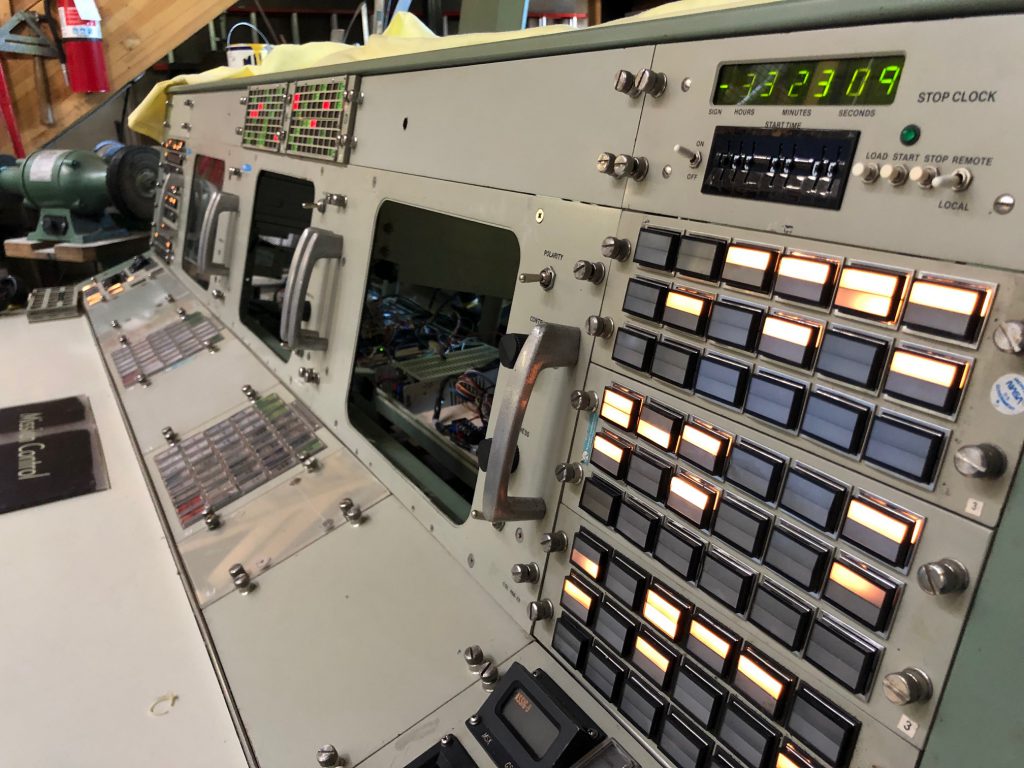
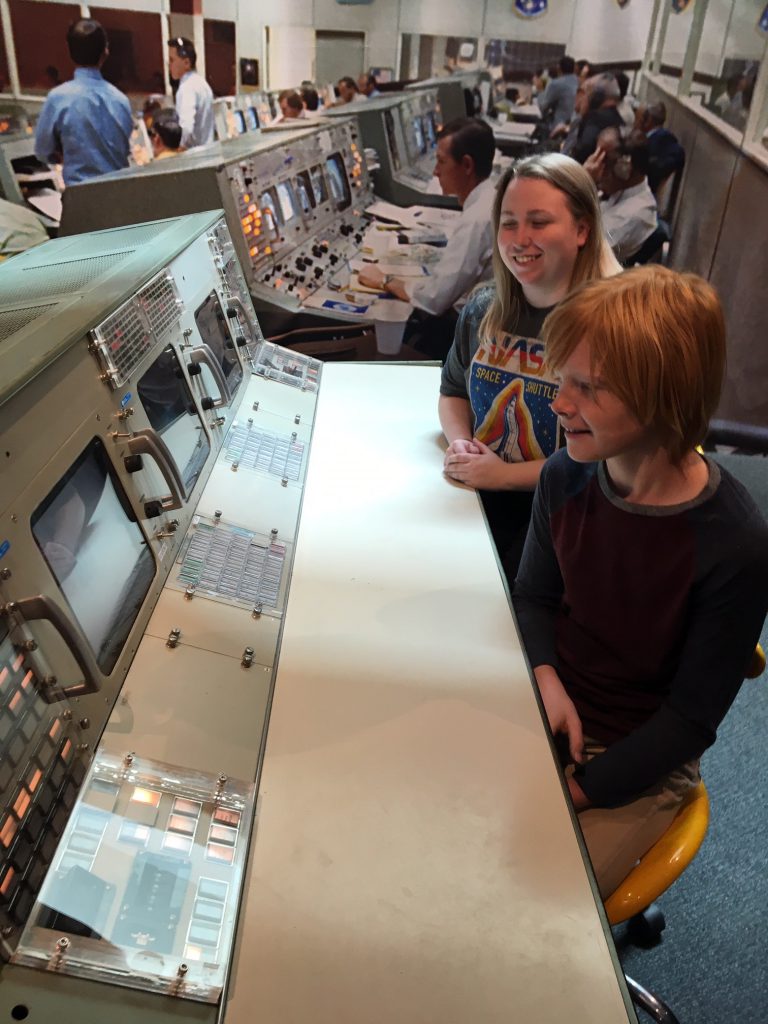
Once we had that part of the puzzle, our exhibit plans evolved exponentially; let by curator Steve Utt, our shop director Leo Palombo designed and built a full-size lunar lander simulator whose realism and attention to detail exceeds those found anywhere else in the world. We borrowed the storied wind tunnel model artifact of the Saturn 1B rocket from North Medford High School, thanks to stellar planetarium teacher Robert Black, to help tell the story. Sculptor Chris Wunderlich built amazingly-accurate large-scale models of the Command and Service Module and Lunar Module spacecraft that served as reliable lifeboats for the astronauts on their half-million-mile roundtrip journeys. It is a beautiful exhibit, and it does exactly what we hoped it would: it gives people new perspectives on the meaning of Apollo, 50 years later, by placing them at ground zero for the monumental achievement. It places you at the command of Mission Control, working through real-time challenges that faced the teams; it places you in the pilot’s position of precise machinery firsthand. Unlike the original, it’s equally open to women and people of color. It reconnects people who were alive at the time to their memories of their experience, and it inspires young people to imagine what it might be like for them to shepherd spacecraft to the Moon, Mars, and beyond, or to explore an extraterrestrial landscape.
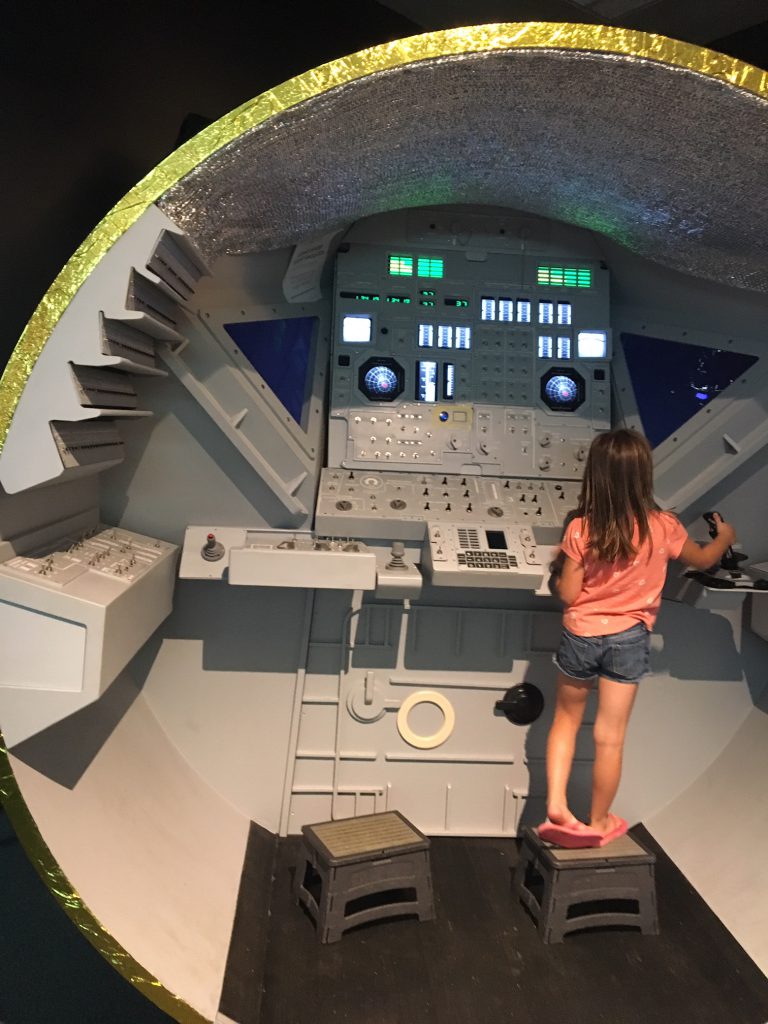
For our team at ScienceWorks, it was an analog of the iterative design process of the Apollo program; we were successful under extreme deadlines and tight budget constraints, and we accomplished more than we anticipated. Toward our new shared vision for the Museum, it combines artifacts with simulation for an immersive experience, and begins to include guests as a part of our testing process; we have been continually refining and updating the exhibit based on feedback.
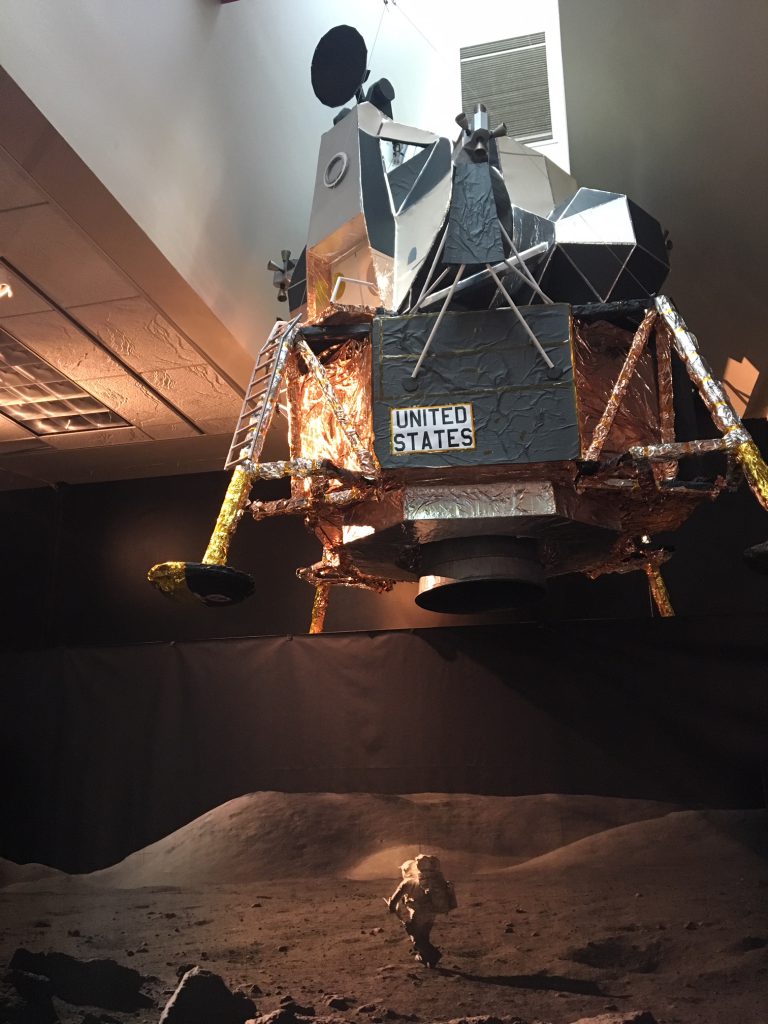
We are proud of the exhibit and excited for Southern Oregon to see it as part of our new directions, as we aim to be a champion of science for a region that stretches coast to the Cascades, and a showcase of innovation. We invite you to check it out through September—we’ll conclude celebrations of Apollo 50 with International Space Week in early October, and then move many of the components from our experimental Da Vinci’s Garage space to a permanent home in the Museum.
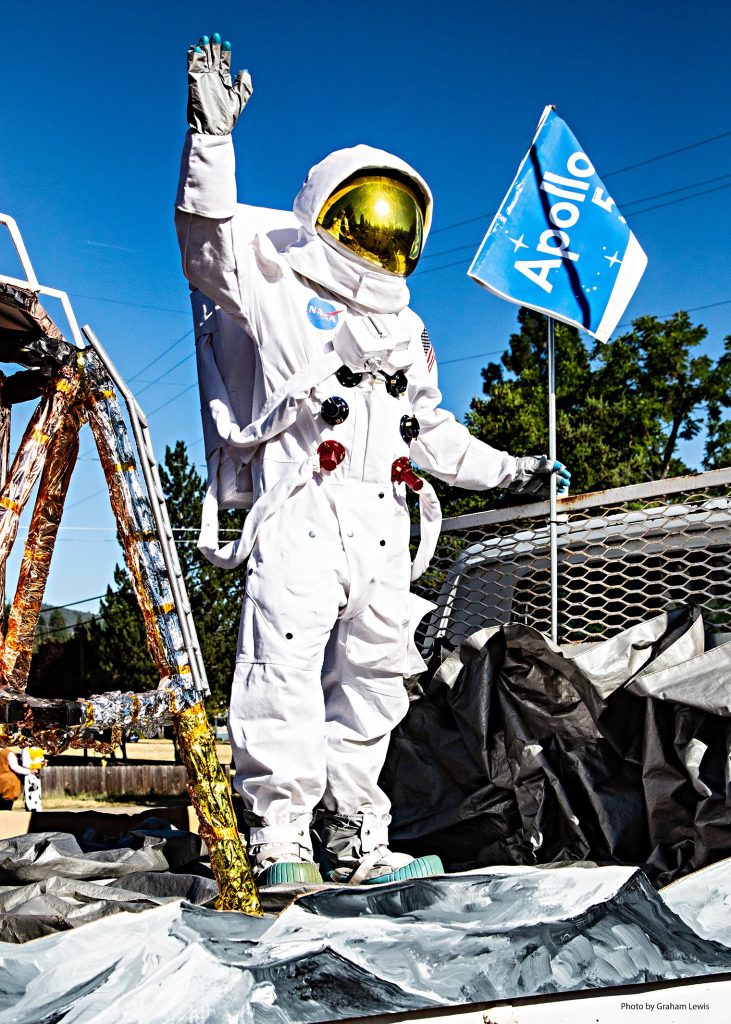
Our hours for September will be:
11 am to 6 pm, Wednesday through Sunday
Admission will be half price for the month, as the featured gallery will be closed for Wild Music deinstallation and Sportsology installation.


Advertisement